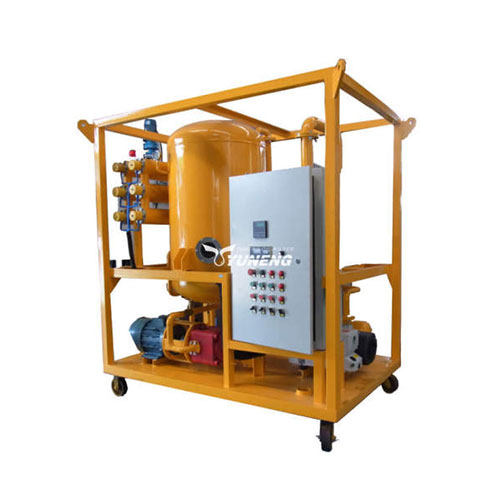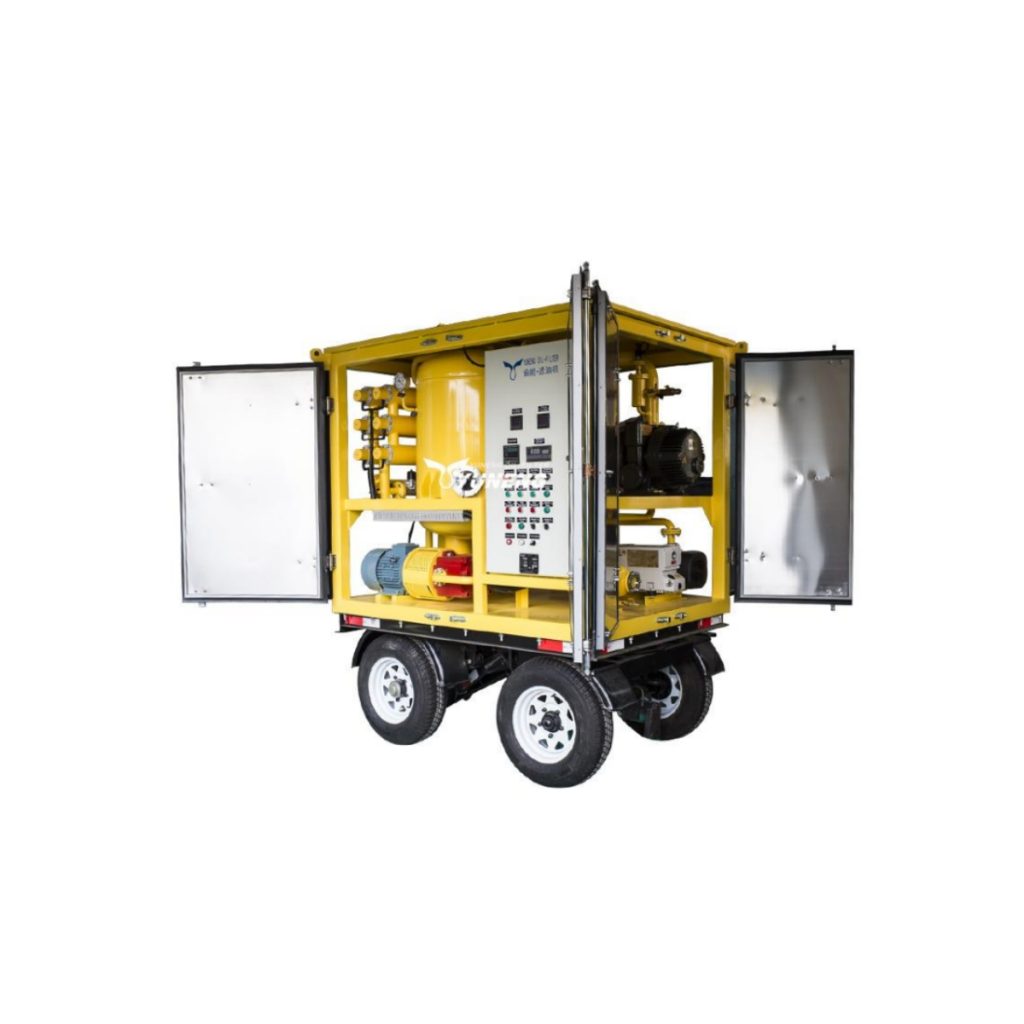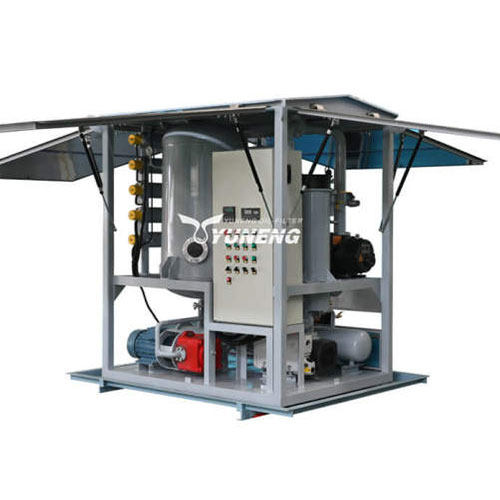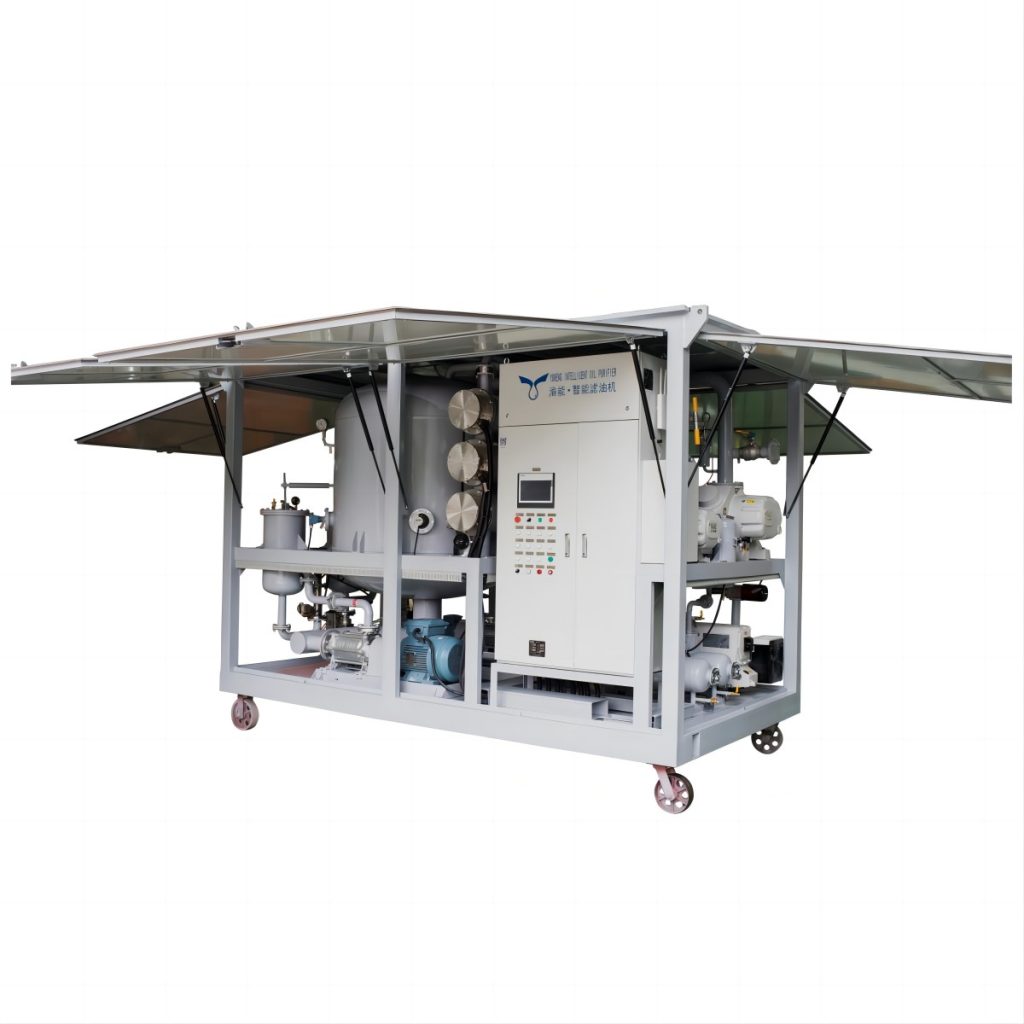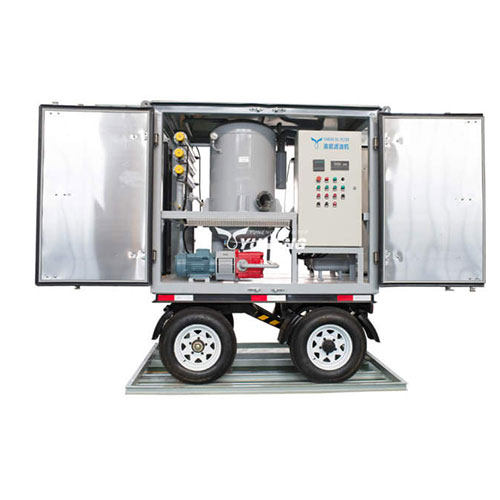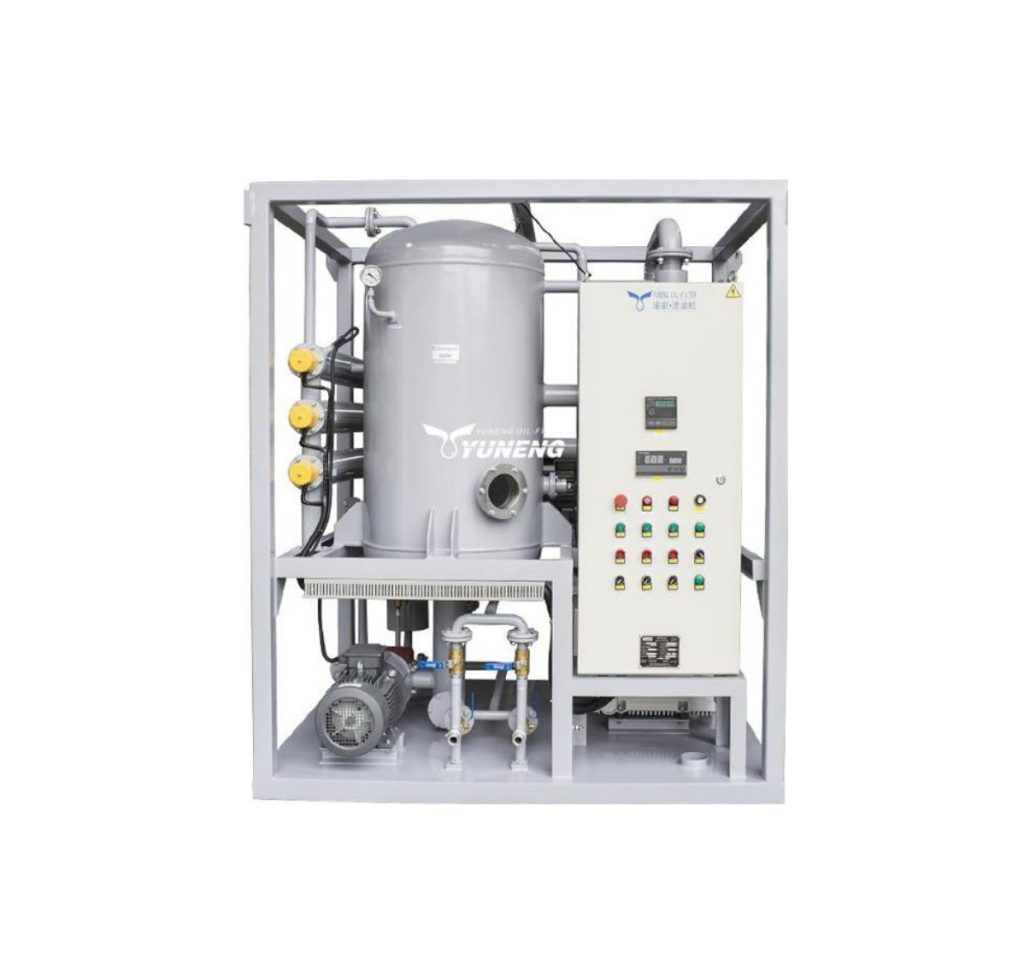The Crucial Role of Vacuum Systems in Transformer Oil Purification
Transformer oil purification is crucial in maintaining the efficiency and longevity of transformers. The vacuum system within transformer oil filtration machines plays a pivotal role in this process. This article delves into the components, functions, characteristics, seasonal adjustments, common issues, and maintenance of the vacuum system in transformer oil filtration machines.

Functions of Transformer Oil Purification Machine Vacuum Systems
The transformer oil purification machine vacuum system operates by creating and maintaining a specific level of vacuum within the machine. This vacuum environment facilitates the removal of two key impurities from the oil: water and dissolved gases.
- Dehydration and Degassing: Water and dissolved gases, such as air, hydrogen, and acetylene, can significantly compromise the insulating properties of transformer oil. The vacuum system enables these contaminants to readily evaporate at lower boiling points due to the reduced pressure. Subsequently, the evaporated water and gases are extracted from the oil through a condenser and exhaust piping. This process significantly enhances the oil’s dielectric strength, a crucial parameter for its insulating ability.
- Improved Oil Quality: Beyond removing water and gases, the vacuum system also contributes to the overall improvement of the oil quality. By facilitating the evaporation of lighter contaminants, the vacuum system helps eliminate some mechanical impurities present in the oil. This comprehensive purification process extends the lifespan of both the transformer oil and the transformer itself.
- Energy Conservation and Emission Reduction: A well-designed and efficient transformer oil purification machine vacuum system can contribute positively to environmental sustainability. The vacuum system operates by consuming less energy compared to traditional purification methods that rely solely on high temperatures. Additionally, by removing impurities that can contribute to increased electrical resistance and energy losses within the transformer, the overall energy efficiency of the power system is improved. Furthermore, by minimizing energy consumption, the vacuum system also helps reduce carbon dioxide emissions, aligning with environmental protection goals.
Characteristics of Transformer Oil Purification Machine Vacuum Systems
- High Vacuum Degree: Modern systems are capable of achieving very high vacuum levels, typically reaching a limit vacuum below 5 Pascal (Pa). This exceptional level of vacuum creation significantly accelerates the process of removing moisture and dissolved gases from the transformer oil.
- Large Pumping Speed: To accommodate varying scales and requirements of transformer oil purification tasks, the vacuum system is equipped with high-speed vacuum pumps. These pumps ensure sufficient pumping capacity to handle the volume of oil being processed efficiently.
- Automated Control: Advanced transformer oil purification machines incorporate automated control systems. These systems monitor various parameters like liquid level, temperature, and pressure within the machine. They also offer functionalities like automatic shut-off and alarms in case of deviations from pre-set parameters. This level of automation allows for unattended operation, enhancing overall work efficiency and safety.
- Energy Efficiency and Environmental Friendliness: The design and material selection for transformer oil purification machine vacuum systems prioritize both energy conservation and environmental protection. Features like low-noise operation, efficient condenser units, and high-capacity vacuum pumps contribute to reduced energy consumption. Additionally, the use of environmentally friendly materials minimizes the system’s environmental impact.
- Safety Protection: Multiple safety measures are incorporated into the transformer oil purification machine vacuum system to ensure the safety of both the equipment and personnel operating it. These measures typically include phase sequence protection, overpressure protection, and filter pressure protection. These features help prevent potential equipment malfunctions and safeguard personnel from accidents.
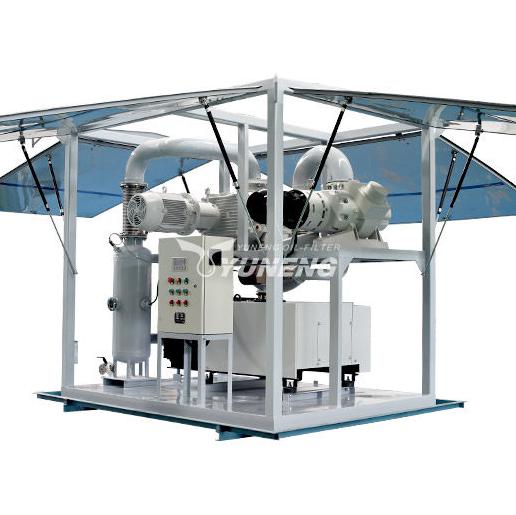
Seasonal Adjustments for Transformer Oil Filtration Equipment Vacuum Systems
The performance of the vacuum system in transformer oil filtration machines can be influenced by seasonal changes. Adjustments to the system are necessary to maintain optimal performance throughout the year.
- Spring: As spring arrives, the ambient temperature rises, leading to increased humidity. This increased humidity can affect the rate of water evaporation from the oil. To address this, it’s recommended to slightly lower the vacuum level during spring purification processes. This adjustment can achieve better moisture removal, which could potentially harm the oil’s quality.
- Summer: Summer months are characterized by high temperatures. This can be beneficial for transformer oil purification, as higher temperatures promote better oil flow within the machine. Consequently, the pumping speed of the vacuum system can be slightly increased during summer to expedite the separation of water from the oil. Meanwhile, YUNENG’s heaters are divided into several groups, and you can operate them according to your needs to save electricity consumption.. However, due to the generally higher humidity levels in summer, it’s essential to closely monitor the condenser’s efficiency and ensure the timely removal of accumulated condensate to prevent it from re-entering the oil.
- Autumn: Autumn brings cooler temperatures, which can slow down the oil flow within the transformer oil purification machine. To maintain optimal performance during this season, it’s generally recommended to maintain the vacuum level at its standard operating range. However, due to the increased humidity often associated with autumn, it’s crucial to pay close attention to the surrounding environment where the purification machine is operating. If necessary, the heating temperature settings within the machine can be slightly adjusted to compensate for the increased humidity and ensure proper oil processing.
- Winter: Winter presents the most challenging conditions for transformer oil purification due to the significantly lower ambient temperatures. Cold temperatures can significantly hinder oil flow within the machine. To address this, it’s recommended to initially increase the heating temperature within the machine to facilitate smoother oil circulation. Additionally, due to the lower vapor pressure of water at colder temperatures, removing moisture from the oil becomes more challenging. To compensate for this, consider slightly increasing the pumping speed of the vacuum system during winter purification processes. This will help enhance the removal efficiency of water vapor from the oil. Finally, due to the potential for heat loss during winter operation, it’s advisable to implement additional insulation measures around the transformer oil purification machine to minimize heat loss and maintain optimal operating temperatures.
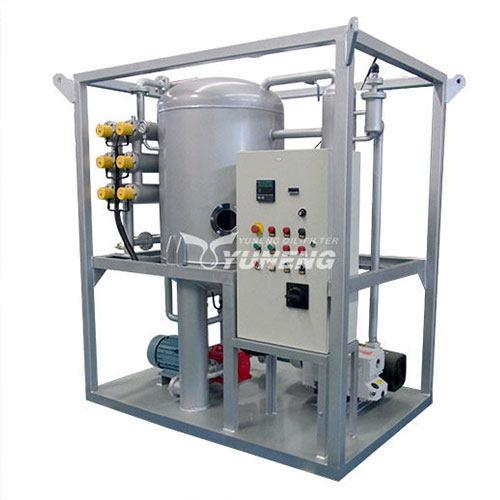
Common Faults and Troubleshooting of Transformer Oil Purification Machine Vacuum System
Despite their efficiency, vacuum systems in transformer oil filtration machines can encounter several issues. Understanding these problems and their solutions is crucial for maintaining optimal performance.
1. Unstable Vacuum: One of the most frequent issues encountered with transformer oil purification machine vacuum systems is an unstable vacuum level. This instability can be caused by several factors. The most common culprits include:
- Ineffective or Clogged Filters: Clogged or malfunctioning filters can impede the smooth flow of oil within the system, leading to fluctuations in the vacuum level.
- Increased Air Leakage: Leaks in the vacuum system can allow air to enter, disrupting the vacuum environment. These leaks can occur at various connection points within the system.
- Excessive Dilution Gas Flow: The vacuum pump within the system removes not only water vapor and dissolved gases but also some non-condensable gases present in the oil. If the volume of these non-condensable gases is excessive, it can overwhelm the pumping capacity and lead to an unstable vacuum.
Troubleshooting:
- Regularly inspect and replace filters as per the manufacturer’s recommendations.
- Conduct thorough inspections of the entire vacuum system to identify and seal any leaks.
- Consult the machine’s manual for guidance on adjusting the pumping speed to accommodate the specific oil being processed.
2. Excessive Oil Temperature: Excessively high oil temperatures during the purification process can negatively impact the system’s performance. This issue can arise due to:
- High Inlet Oil Temperature: If the oil entering the purification machine is already at a high temperature, it can contribute to overheating within the system.
- Rapid Moisture and Gas Evaporation: The rapid evaporation of water and dissolved gases during the vacuum process can also generate additional heat.
Troubleshooting:
- Ensure the transformer oil being treated is within the recommended temperature range before entering the purification machine.
- If necessary, consider enhancing the cooling system’s capacity to handle the generated heat load more effectively.
3. Vacuum Pump Faults: Malfunctioning vacuum pumps can significantly compromise the effectiveness of the entire transformer oil purification process. Common causes of vacuum pump issues include:
- Vacuum Pump Damage: Internal wear and tear or physical damage to the vacuum pump can hinder its ability to maintain a proper vacuum level.
- High Oil Level: Excessively high oil levels within the vacuum pump can impede its proper functioning.
- Water Contamination in Oil: Water contamination in the vacuum pump oil can lead to reduced pumping efficiency.
Troubleshooting:
- Implement a regular maintenance schedule for the vacuum pump, including oil changes and inspections as recommended by the manufacturer. Maintain the vacuum pump oil level within the specified operating range.
- In case of suspected water contamination, replace the vacuum pump oil immediately.
4. Vacuum System Leaks: Leaks within the vacuum system can disrupt the created vacuum environment. These leaks can be caused by:
- Faulty or Damaged Seals: Seals at connection points within the system can deteriorate over time or become damaged during maintenance procedures, leading to leaks.
Troubleshooting:
- Regularly inspect all seals within the vacuum system for signs of wear or damage.
- Replace faulty or damaged seals promptly to maintain system integrity.
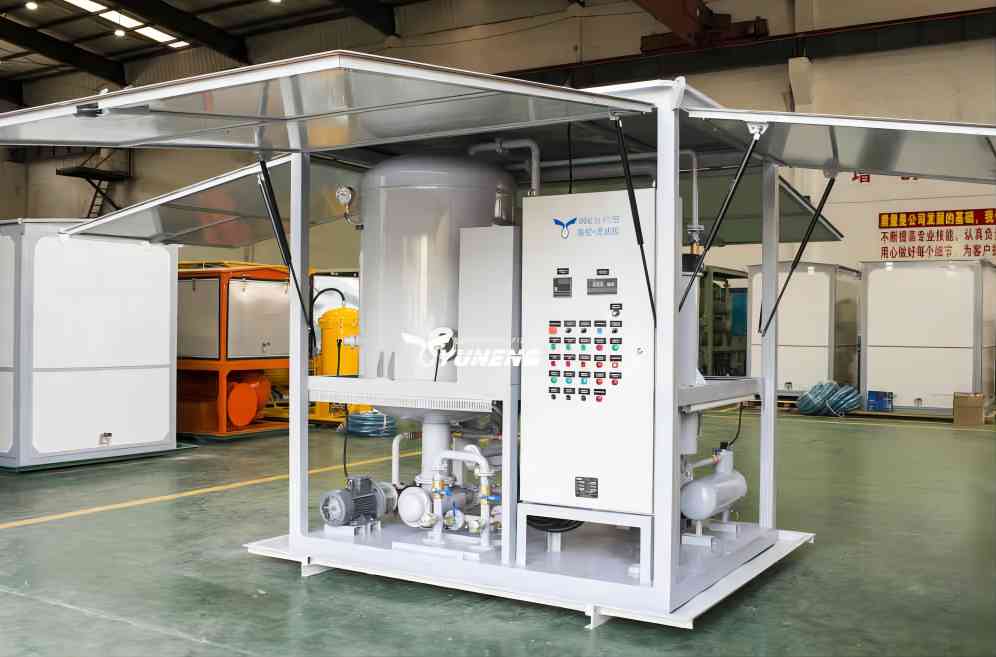
Maintenance and Preventative Measures
To prevent common issues and ensure the efficient operation of the vacuum system in transformer oil filtration machines, regular maintenance and preventative measures are crucial.
- Regular Filter Inspection and Replacement: Ensuring that filters are clean and functioning properly is essential for maintaining a stable vacuum degree and effective purification.
- Routine Vacuum Pump Maintenance: Regularly checking and maintaining the vacuum pump, including oil changes and component inspections, helps prevent failures and ensures consistent performance.
- Monitoring Oil Temperature and Vacuum Degree: Keeping track of oil temperature and vacuum levels helps identify potential issues early and allows for timely adjustments to maintain optimal performance.
- Enhancing System Sealing: Regularly inspecting and reinforcing the sealing of the vacuum system prevents leaks and ensures the maintenance of a stable vacuum environment.
Conclusion
The vacuum system is a critical component of transformer oil filtration machines, playing a vital role in the purification process. By facilitating the rapid removal of water and gases, improving oil quality, and promoting energy efficiency, the vacuum system ensures the effective operation and longevity of transformer oil. Understanding its functions, characteristics, seasonal adjustments, common issues, and maintenance requirements is essential for optimizing transformer oil purification and maintaining the performance of transformers. Regular maintenance and timely adjustments help ensure that the vacuum system operates efficiently, providing reliable and high-quality transformer oil purification.

